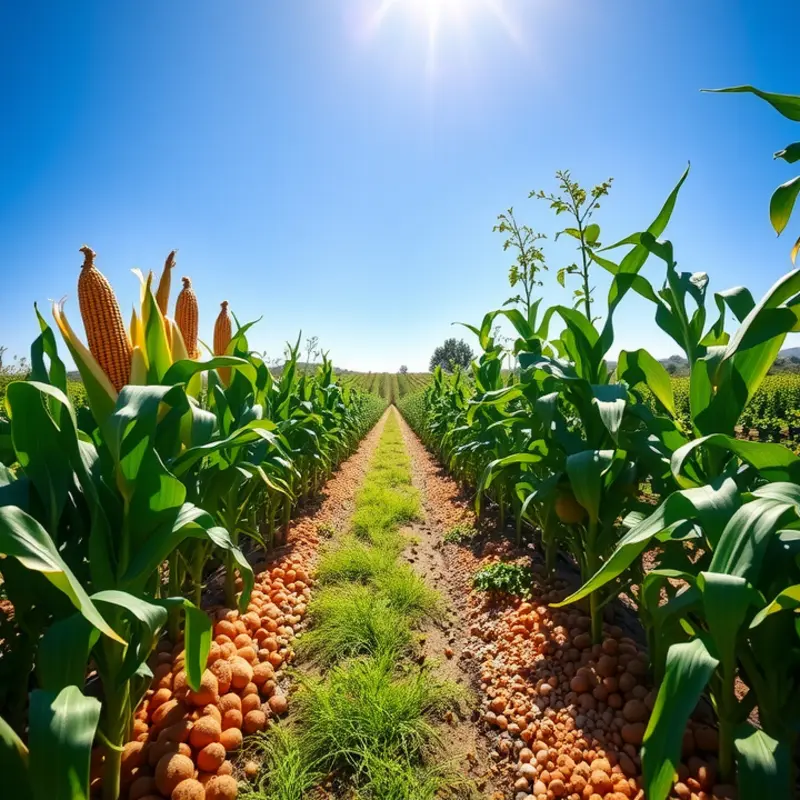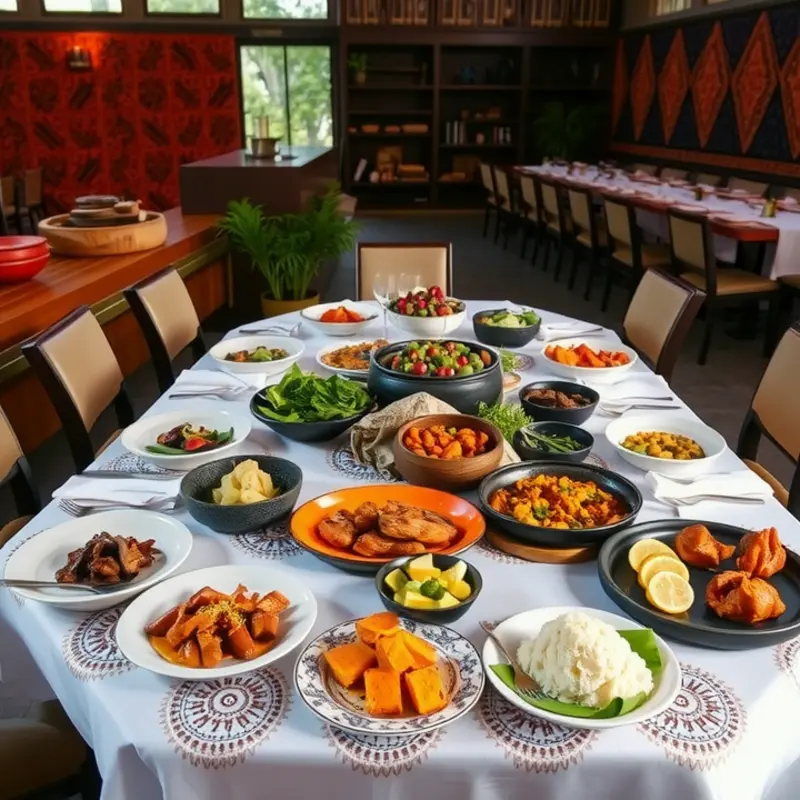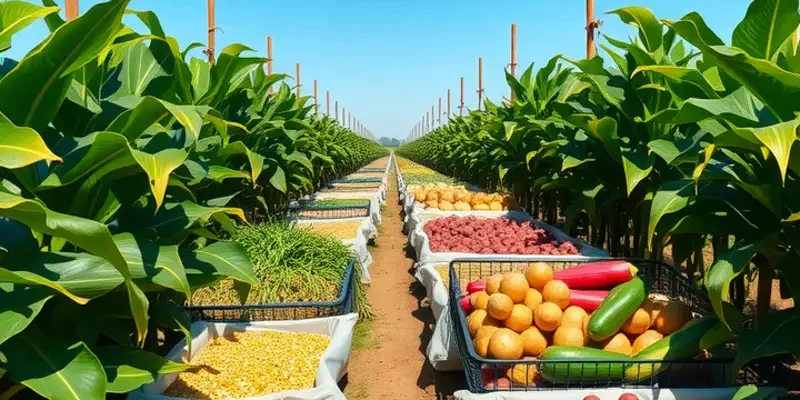Indigenous food traditions offer a unique window into the culinary practices of cultures that have thrived for millennia. From the Inuit harvesting ice fish to the Māori celebrating the harvest of sweet potatoes, these culinary legacies reflect deep connections to land, community, and history. This exploration invites food enthusiasts and culturally curious readers alike to embark on a delectable journey across continents, savoring the flavors of tradition and the stories behind them.
Roots and Rebirth: Foraging and Farming in Indigenous Cultures

The culinary practices of Indigenous peoples reveal a profound relationship with nature. At the heart of these traditions lies a deep respect for the land, manifesting in sustainable foraging and farming methods that have been honed over millennia. From the forests of North America to the Andean highlands, Indigenous communities embrace the cycles of nature, ensuring that their practices enhance, rather than deplete, natural ecosystems.
In many Indigenous cultures, foraging is both an art and science. It involves intricate knowledge of local flora and fauna, identifying which plants are edible, medicinal, or toxic. For example, the Inuit of the Arctic region gather berries like cloudberries and crowberries, which are crucial for their diet and contain essential vitamins in a landscape with limited vegetation.
Sustainable farming practices also hold a significant place in Indigenous culinary heritage. In the Andean regions, the cultivation of quinoa is central. This ancient grain, rich in protein and nutrients, thrives in harsh climatic conditions. Andean farmers employ terracing techniques to prevent soil erosion and conserve water, ensuring the land remains fertile for future generations.
In North America, maize or corn is a staple that has shaped the diets of various Indigenous communities. The ‘Three Sisters’ agricultural method—growing maize, beans, and squash together—demonstrates a sophisticated understanding of companion planting. The maize provides a structure for the beans to climb, while the squash covers the ground, reducing weeds and preserving moisture. This symbiotic relationship exemplifies how Indigenous people harmonize with nature.
Beyond individual techniques, Indigenous food systems deeply honor communal and seasonal harvests. Groups often gather to harvest wild rice in the Great Lakes region or celebrate as a community during taro harvesting in Hawaii. These gatherings strengthen community bonds and ensure that every member benefits from the earth’s bounty. Celebratory feasts follow, where the food is prepared and shared, reinforcing social connections and cultural identity.
Unique ingredients define Indigenous cuisines, yet they represent more than sustenance. Plants such as acorns, used by Californian tribes, are processed through labor-intensive methods of leaching and grinding, showing reverence through the time and care devoted to every meal. By respecting natural rhythms, these practices mitigate overuse and ensure resources endure.
By embracing the philosophy of food as a means to connect and protect, Indigenous peoples exemplify enduring principles of mindful living. Modern culinary enthusiasts can learn much by incorporating such sustainable practices. Understanding these time-honored traditions can inspire a more balanced and ecologically sound approach to food today. For those interested in aligning their kitchen habits with these values, eco-smart kitchen storage practices offer a starting point for reducing environmental impact and embracing a philosophy of gratitude and stewardship.
Flavorful Heritage: Culinary Practices That Tell a Story

The culinary traditions of Indigenous peoples are more than just recipes. They are narratives woven into the fabric of community life. Cooking methodologies imbued with ancestral wisdom reflect the unique relationship Indigenous cultures have with their land and resources. These methods are passed down through generations, preserving not just flavors, but also stories and identities.
A prime example is the Maori of New Zealand, whose traditional cooking method, the Hāngī, represents a communal celebration of life and heritage. The Hāngī involves cooking food on heated stones buried in a pit oven, embodying the Earth’s nurturing essence. This technique is a ritual in itself, where families and communities gather, each member contributing to the process. The steam rising from the Hāngī does not just cook the food, but also symbolizes collective storytelling, with each aroma and flavor triggering memories of shared experiences.
Another culinary tradition with rich narratives is the preparation of bresaola by Native American tribes. Unlike the Italian cured meat of the same name, this dish often consists of dried meats specific to tribal diets, drawing from the natural and spiritual worlds. This practice of curing and preserving meat is more than sustenance; it is an art form and testament to Indigenous resilience and resourcefulness. Such traditions ensure communities remain connected to their ancestors, perpetuating cultural identities in a world where connectivity is waning.
Communal cooking rituals hold spiritual significance, often serving as an essential part of celebratory events. These practices highlight how food is a vessel for spiritual dialogue. Participation in these rituals is revered not merely for the meal but for the bonds forged during the preparation. The collaborative nature of these cooking practices strengthens community ties, welcoming members to engage in a shared culinary experience that transcends time and geographical boundaries.
Indigenous culinary practices emphasize the profound connection between food, culture, and spirituality. They invite us to slow down and appreciate the interconnectedness of our actions and the natural world. As we partake in these age-old customs, we are reminded of the cyclical nature of life, where knowledge and traditions are not just inherited but are part of a continuous dialogue.
Incorporating ancient cooking techniques into modern culinary practices offers a fresh perspective on sustainable living. These traditions advocate for utilizing every part of an ingredient to minimize waste, aligning with eco-smart kitchen storage practices. For those interested in further exploring sustainable culinary techniques, resources like eco-smart kitchen storage provide valuable insights on minimizing waste.
By observing these time-honored culinary practices, we cherish the stories of our ancestors, cultivating a deeper understanding and respect for the communities from which we come.
Final words
Indigenous food traditions are not merely recipes; they are living narratives rich with history, culture, and communal spirit. These culinary practices connect us to the earth and provide insight into the values and beliefs of diverse cultures. As we savor these flavors around the world, we embrace not only unique tastes but also the stories that make each dish a symbol of resilience and heritage. By exploring these traditions, we foster a deeper understanding of humanity and our collective responsibility to honor and preserve the rich tapestry of global culinary practices.








